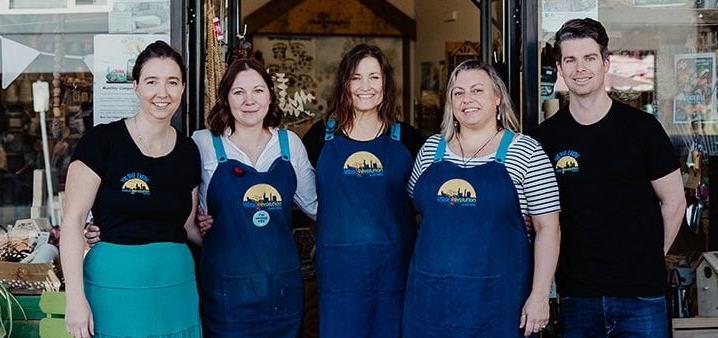Mud play allows children to connect and interact with the natural world around them. And many kids relish the opportunity to get down and dirty outdoors!

What are the benefits of mud play?
Mud connects children directly with nature and the plants and living creatures that inhabit their world. Hands on mud play helps children develop tactile skills through sensory play. As children grow through their pre school and early primary years, mud play will help them to achieve many key developmental milestones, such as fine and gross motor skills, sensory awareness, balance and coordination.

Mud play also supports children's physical development: their large motor skills are honed as they learn to 'slip and slide' in the mud and fine motor skills advance as they manipulate the mud with their hands. Children's social skills can be developed through mud play as they cooperate, have fun and create together.
According to the "hygiene hypothesis" first proposed by epidemiologist David Strachan in 1989, children raised in extremely clean environments, who have little exposure to the bacteria, viruses and parasites typically found in mud and soil, may be more likely to develop allergies and asthma.

In 2007, researchers at the University of Bristol found that ‘friendly’ bacteria in soil could actually be responsible for activating a group of neurons that produce serotonin, the chemical responsible for raising our mood.
So playing with mud not only makes us happy but also helps to build children’s immune systems. Research tells us that ‘getting dirty’ earlier in life can often lead to less allergies and a body that can cope better with illness and fight off germs. Mud play supports children to be more curious about the world, with many children finding fascination with creatures such as worms.

How to set up mud play
There are a number of ways that you can facilitate easy mud play for kids. Some of our favourite mud play activities are:
1. Build a mud kitchen - an outdoor version of a play kitchen with old pots, pans and utensils. An old piece of furniture or an old kitchen sink is a good starting point. A water source nearby adds to the fun!
2. Dig trenches and pathways - designate an area where children can dig and give them buckets of water to make a muddy river.
3. Small world play - add water to a sand box or put some mud into an old baking tin, then add some small toys like dinosaurs, animals or toy cars and encourage imaginative play.
4.Use mud for art - mold mud into sculptures, make muddy footprints or paint with mud onto pavers, paper or cardboard. Try mixing our natural paint powderwith mud for a textured finish.
5. Puddle jumping - make a pool of muddy water or search out natural puddles in winter and jump right in!

Safe mud play guidelines
We would recommend that you avoid new bagged potting mix products (due to the legionnaires disease risk factor) and just use available soil in the garden - from an old veggie bed or pot for example. You can bulk it out with some bagged washed river sand that you buy to fill sand pits if need be. Leaving the play sand in contact with soil in garden will help bring in the beneficial bacteria and just cover with a tarp after play to stop cats etc from soiling it. A bit of worm castings or home matured compost probably wont hurt either, if you have some on hand.
References:
Lowry CA, et al., Identification of an immune-responsive mesolimbocortical serotonergic system: Potential role in regulation of emotional behavior, Neuroscience (2007), doi: 10.1016/j.neuroscience.2007.01.067






Leave a comment (all fields required)